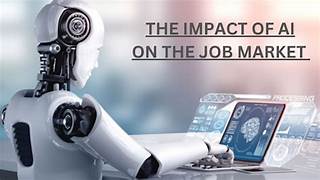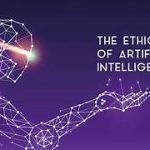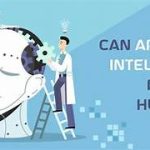The Impact of Artificial Intelligence on Job Markets
Introduction
Artificial Intelligence (AI) has emerged as a transformative force in the 21st century, revolutionizing industries and reshaping the way we live and work. From healthcare to entertainment, AI is enhancing productivity and creating new opportunities. However, its impact on job markets has been a topic of intense debate. Will AI create more jobs than it eliminates? Or will it exacerbate unemployment and economic inequality?
This article delves into the multifaceted impact of AI on job markets, exploring the challenges, opportunities, and the measures required to adapt to this new era.
1. Automation and Job Displacement
The Rise of Automation
AI-driven automation is transforming industries by streamlining processes, reducing errors, and increasing efficiency. Sectors like manufacturing, logistics, and retail have seen significant automation, with machines replacing repetitive and manual tasks. For instance, robotic process automation (RPA) is being used to handle routine administrative tasks, while self-checkout kiosks are becoming standard in retail.
The Displacement Effect
While automation improves productivity, it also raises concerns about job displacement. Jobs involving routine or predictable tasks are most at risk. Truck drivers, factory workers, and data entry clerks, for example, face the possibility of losing their roles to AI-powered machines. The World Economic Forum estimates that by 2025, automation could displace around 85 million jobs globally.
2. Job Creation in the AI Era
New Opportunities in Emerging Fields
Despite fears of job loss, AI is also creating new opportunities in areas like machine learning, data analysis, and robotics. The demand for AI specialists, data scientists, and cybersecurity experts is on the rise. According to LinkedIn, AI-related roles have seen exponential growth in recent years, with job postings for AI specialists increasing by 74% annually.
Indirect Job Creation
AI also fosters job growth indirectly by enabling the development of entirely new industries. For example, the rise of autonomous vehicles has spurred demand for engineers, software developers, and regulatory consultants. Similarly, AI-driven personalized medicine has created opportunities in biotechnology and healthcare analytics.
3. The Shift in Skill Requirements
The Need for Reskilling
As AI automates routine tasks, the demand for workers with advanced technical skills and soft skills is increasing. Critical thinking, creativity, emotional intelligence, and adaptability are becoming essential in the modern workforce. Roles that require human empathy and judgment, such as caregiving and customer service, remain difficult to automate.
Upskilling for the Future
To adapt to the AI revolution, workers need access to reskilling and upskilling programs. Governments, educational institutions, and private companies are investing in training initiatives to prepare the workforce for AI-driven industries. Online platforms like Coursera, edX, and Udemy offer courses on AI, programming, and data science, helping individuals stay competitive.
4. Economic Inequality and Regional Disparities
The Risk of Widening Inequality
AI’s impact on job markets is not uniform. High-skilled workers in technology-driven economies stand to benefit the most, while low-skilled workers in labor-intensive roles are at greater risk of displacement. This dynamic could exacerbate income inequality, as those who can adapt to AI technologies reap the rewards, while others face economic insecurity.
Regional Variations
The impact of AI also varies by region. Developed countries with advanced technological infrastructure are better positioned to harness AI’s benefits, while developing nations may struggle to keep pace. Without targeted interventions, AI could widen the gap between wealthy and less-developed regions.
5. The Role of Governments and Policy Makers
Supporting Workers Through Transition
Governments play a crucial role in mitigating the negative impacts of AI on job markets. Policies such as unemployment benefits, wage subsidies, and social safety nets can provide immediate relief to displaced workers. In the long term, governments must invest in education and training programs to prepare the workforce for AI-driven industries.
Regulating AI Adoption
To ensure responsible AI adoption, policymakers must establish guidelines that balance innovation with societal well-being. Ethical considerations, such as preventing biased algorithms and ensuring data privacy, are critical. By fostering public-private partnerships, governments can encourage equitable AI development and deployment.
6. The Role of Businesses and Organizations
Ethical Implementation of AI
Businesses have a responsibility to implement AI ethically, considering its impact on employees. Transparent communication about automation plans, along with efforts to reskill workers, can foster trust and minimize resistance. Organizations like IBM and Microsoft have taken proactive steps to integrate AI while prioritizing employee welfare.
Embracing a Hybrid Workforce
Rather than replacing human workers entirely, many companies are adopting a hybrid workforce model, where humans and AI collaborate. This approach allows businesses to leverage the strengths of both, with AI handling repetitive tasks and humans focusing on strategic and creative activities.
7. Jobs That AI Cannot Replace
The Human Touch
While AI excels at tasks requiring precision and speed, it struggles with roles that require emotional intelligence, creativity, and complex decision-making. Jobs in healthcare, education, arts, and leadership are less susceptible to automation. For example, a teacher’s ability to inspire students or a doctor’s empathy during a patient consultation cannot be replicated by machines.
New Horizons
AI is also enabling the creation of jobs that were previously unimaginable. Virtual reality designers, AI ethicists, and drone operators are just a few examples of roles emerging in the AI era. These positions highlight the potential for human ingenuity to adapt to technological advancements.
8. The Future of Work
Redefining Career Paths
As AI continues to evolve, traditional career paths may become obsolete. Lifelong learning will become a necessity, with individuals needing to continuously update their skills to remain relevant. Careers may also become more fluid, with workers shifting between multiple roles and industries over their lifetimes.
The Rise of Remote and Gig Work
AI-powered tools are facilitating remote work and the gig economy, allowing individuals to work flexibly from anywhere. Platforms like Upwork and Fiverr have leveraged AI to connect freelancers with clients, enabling new forms of employment. However, this trend also raises concerns about job security and benefits for gig workers.
Conclusion
The impact of artificial intelligence on job markets is profound and multifaceted. While AI presents challenges, such as job displacement and economic inequality, it also offers opportunities for growth, innovation, and improved quality of life. The key to navigating this transformation lies in proactive measures by governments, businesses, and individuals.
By fostering a culture of continuous learning, promoting ethical AI practices, and addressing societal inequalities, we can harness AI’s potential to create a more equitable and prosperous future. The AI revolution is not just about machines; it’s about empowering people to thrive in an ever-changing world.


